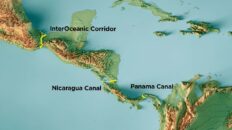In the 1960s, the US military tested a psychedelic called BZ on its own troops, to study how they could use it as a weapon. The results were shocking, but drugs have been used in the military for as long as humans have been fighting each other. Today we take a look at this taboo subject.
TRANSCIPT:
U.S. Civil War General William Tecumseh Sherman once said “war is hell.” He and a lot of people but somehow it stuck to him.
Yeah, human bodies being ripped to shreds all around you while every moment feels like the last you’ll ever have, I think that term applies.
Sometimes a human being needs a little extra help to perform in these conditions. And for centuries, armies have used stimulants to provide that help.
They helped in a lot of ways, from enhancing troop performance and keeping soldiers awake to even helping soldiers bond with each other, which led to better group cohesion and morale.
The short of it is that soldiers have been fighting while high for much of world history.
Alcohol is probably the oldest and most popular motivator for soldiers. For example, British soldiers would turn to rum, while Russians would drink vodka.
Ancient Greeks and Romans preferred wine. The Germans? That’s right, beer.
And for Americans, it’s been whiskey since the Civil War.
But just like for most of us, alcohol is pretty basic when it comes to really getting lit, for that you need to get more herbal.
For example, when the British tried to conquer the Zulu tribes in 1879, they got more they bargained for, in fact, their enemy seemed almost immune to rifle fire.
It turns out the Zulu warriors had been given various herbs by their shaman, herbs like intelezi, which is a traditional plant that basically makes you fearless.
They also gave them dagga, which is a South African variety of cannabis that has a stimulating effect.
And there was also the “bushman poison bulb,” whose effects caused hallucinations.
You know you hear that and you might think, “why would they do that, wouldn’t that make the soldiers crazy?” Well, you’re sending them into a crazy situation. Maybe that’s an advantage.
In Eurasia, mushrooms were often used by soldiers in Siberian tribes.
For example, the main psychoactive component of a toadstool mushroom is muscimol, which can enhance combat performance.
Soviet soldiers were reportedly intoxicated on mushrooms and fought fearlessly at the Battle of Székesfehérvár (SEE-kesh fer-HER-var in Hungary in 1945.
During World War One, French and German pilots and Canadian soldiers were known to use cocaine.
London pharmacists even sold medical kits that contained cocaine and heroin.
They were advertised as “useful presents for friends at the front.” Women would buy and send them to the soldiers.
I feel like it’s important to point out that they gave cocaine and heroin to kids back then too, so…
Next up was World War II and this was was all about the amphetamines.
The Nazis especially conducted systematic military doping with an early version of crystal meth called Pervitin.
The drug would increase alertness, energize the body, reduce fatigue, and boost confidence.
Troops were issued around 35 million pills during the peak of the Blitzkrieg in spring 1940.
Some soldiers even took up to four pills a day. It’s believed that from 1939 to 1945 the German military took about 200 million meth pills.
Seriously, the Nazis were meth-heads.
So how do you beat an army of meth heads? With your own meth heads.
Yeah the Allies gave meth to their troops, too in the form of Benzedrine pills.
72 million Benzedrine amphetamine tablets were issued to British troops during the second world war.
The U.S. gave Benzedrine tablets to bomber crews in 1942 before offering them to infantrymen the next year.
All in all, the Pentagon issued anywhere from 250 million to 500 million Benzedrine tablets to Allied troops.
Starting in the 1950s and 1960s, there was a new class of drugs that began to interest the U.S. military: psychedelics.
One of these was lysergic acid diethylamide, or LSD.
The story is that a chemist named Albert Hofmann was working for Sandoz Pharmaceutical, trying to create a blood stimulant.
And one of the drugs he synthesized 1938 just happened to be LSD, but he didn’t know that it had any hallucinogenic effects until 1943, when he… accidentally consumed some.
That’s an upsetting way to find out that you need to CLEAN YOUR LAB.
So psychiatrists started experimenting with LSD starting around 1950, and between 1950 and 1965, had administered it to more than 40,000 patients and wrote more than 1000 scientific papers on the subject.
But it was the 1960s when the drug became popular with the general public, hence the psychedelic 60s. It was promoted by alternative thought leaders at the time like Timothy Leary with his “turn on, tune in, drop out” mantra.
But perhaps nobody wanted to tune in more than the US Military and the CIA.
Project MK-Ultra was a CIA program that started in the 1950s and through the 1960s where the CIA experimented with LSD and other substances on volunteers and unsuspecting subjects.
Dozens of medical facilities, pharmaceutical companies, and universities were involved.
The thinking was that LSD could be used as a psychological weapon during the Cold War, but ultimately they decided it was too unpredictable for use in the field.
By the way, this marked a bit of a shift in the use of drugs in the military. Like all the previous examples I mentioned were about enhancing the performance of their own troops, this was more about using drugs as a weapon against the enemy.
And to my knowledge anyway, this was different, drugs hadn’t been used this way before, unless you count chemical weapons like mustard gas and sarin and whatnot.
With psychedelics, the army saw an opportunity to confuse and disable an enemy or to engage in psychological warfare with the populace by doping them against their knowledge.
And it didn’t stop with LSD, one of the most interesting and lesser known drugs they tested was 3-quinuclidinyl (quin-u-clid-inil) benzilate, also known as Agent BZ.
If you wanna get deep in the science lingo, it’s an anticholinergic drug, which means it blocks the action of acetylcholine, which is a type of neural transmitter that sends messages between neurons.
It gives the neurons a bad connection basically.
Much like LSD, this was also discovered by accident by a pharmaceutical company called Hoffmann-La Roche – different Hofmann than the LSD guy by the way – they were trying to create an antispasmodic for GI conditions.
But in 1951, they discovered that one of their formulas… kinda messed people up. And in comes the military.
The U.S. Army began experimenting with BZ and its effects at the Edgewood Arsenal in Maryland in the 1950s.
They were run by U.S. Army researcher John Ketchum. He was a colonel who had spent much of his career researching how drugs like LSD and PCP could be turned into chemical weapons.
Ketchum was fascinated by BZ and the bizarre effects, saying:
“Subjects sometimes display something approaching wit, not in the form of word-play, but as a kind of sarcasm or unexpected frankness,” he wrote in a report.
(act out) That sounds like a review of my channel.
(maybe a comment animation of someone typing “something approaching wit”)
The effects would last for several days, and during the drug’s peak, subjects were completely cut off in their own minds, jumping from one fragmented reality to the next.
They’d even see visions, like tiny baseball players on a tabletop diamond, animals, and objects that materialized and vanished.
And they reportedly barely remembered the experience after the drug wore off.
His most notable BZ tests took place in May of 1962, and this was quite a production.
They literally built a fake communications outpost and locked four volunteer soldiers in the building for 72 hours.
They were provided with food and water, medicine, and a chemical toilet. And were given combat simulations to see how they would perform as a communications team under the influence of BZ.
All the while they had four cameras set up around the room with Ketchum and several technicians observing through monitors on the outside.
So, there were four of these guys, like I mentioned, and three of them remained anonymous in Ketchum’s report, one of them was identified as Pfc. Ronald Zadrozny. The others are only identified as H, C, and L.
L was the leader of the group – maybe that’s why he went by L – and he was the control subject, he didn’t have any of the BZ.
H and C got low doses of it and Zadrozny got the largest dose.
One example of a test they were put through was Ketchum triggered an alarm that indicated a chemical attack, which caused the men to rush to put on their gas masks.
The guys with the lower doses did okay but Zadrozny was in a state of delirium and had to be helped with it.
During Zadrozny’s drug-induced weekend, he saluted imaginary officers, thought a drape that partitioned the toilet was a group of men, and would stay up late pacing, mumbling, and trying to escape the room.
He began to improve at one point and sat in front of the switchboard, ready to receive communication, but didn’t understand that he had to put the telephone to his ear to hear anything.
When one of the other soldiers tried to explain it to him, he said he couldn’t because “It wasn’t working with electrodes.”
The soldiers were subjected to 200 phony tactical messages and warnings of chemical attacks. In the end, the experiment showed that BZ could be used to render troops ineffective.
But it wasn’t the end of the tests.
That same year, reservist Walter Payne was told to inhale a cloud of BZ in a wind tunnel. He was unresponsive three hours later.
He was examined and showed “signs of decerebrated rigidity with hyperextension of the back, neck and limbs, accompanied by irregular twitching movement of limbs.”
In other words, there were signs of major head trauma and brain damage.
Payne was quickly given an antidote and he recovered from it pretty fast. They did an EEG test on him almost a month later and it showed that he was back to normal.
Dodged a bullet on that one. I’m sure they won’t do that again…
In 1963, they did it again with another volunteer named Jason Butler, Jr. This time they had him breathe in the BZ in a wind tunnel… and he immediately went into critical condition.
His head shook spastically, and his body temperature peaked at 39.8 degrees Celcius (103.6 degrees Fahrenheit).
He was given an antidote and sponged with ice water to cool him down. Doctors released him after six days, saying he looked normal. And vowing that they would never, ever, ever do–
Another test a year later tried to see if they could incapacitate a group of soldiers with a cloud of BZ in the field. This was called Project DORK for some reason.
(is there a movie clip we could put here?)
This one is kinda hilarious because they had trouble getting the cloud to stick around long enough for the soldiers to breathe it in, it just dispersed in the wind too quickly.
So they tried doing it at a specific time before dawn when the air and ground temperature differences were just right, to prevent it from drifting away, and that didn’t work.
So they resorted to having eight soldiers running in place on the back of a moving vehicle that moved along with the cloud so they could breathe as much of it in as possible. And it still didn’t work.
So yeah, seeing as how they didn’t think they would get an enemy to agree to drive along with a cloud of poison gas while their soldiers breathed in as much of it as possible, they had to abandon the idea.
The BZ tests officially ended in the early 70s but there were rumors that the military tested them on US soldiers in Vietnam. The ending of the movie Jacob’s Ladder refers to this but in the movie BZ turned the soldiers into violent, aggressive animals, which is not at all what the experiments reported. So that’s probably just some Hollywood fantasy.
Unfortunately for many of the volunteers in these experiments, the effects changed their lives forever.
The Army published a study in 1980 that showed 16 percent of volunteers who took LSD suffered psychological symptoms like depression, flashbacks, and suicidal ideation later in their lives.
Another study showed many subjects had been hospitalized for nervous-system disorders.
And tragically in 1995, Ronald Zadrozny killed his third wife and then himself. Although his ex-wife claimed that he never appeared bothered by the BZ experiments.
Since that happened more than 30 years before his death, it’s probably fair to assume that the drug had nothing to do with it. Or maybe it did. We’ll never know.
Believe it or not, military experiments involving psychedelic drugs are continuing to this day… but for a very different reason.
Psychedelics have been shown to be useful in therapeutic settings, and they’re now being studied to help soldiers and veterans to treat anxiety, depression, and substance abuse.
In 2020, the Defense Advanced Research Projects Agency better known as DARPA funded a $27 million project to create new medications for this purpose.
DARPA’s announcement didn’t specifically mention psychedelics, but it referred to “certain Schedule 1 controlled drugs that engage serotonin receptors” and that have “significant side effects, including hallucination.”
Psychedelic drugs appear to create a state of plasticity in the brain that makes it easier for people to rewire neuronal circuits and learn new behaviors.
For soldiers suffering from post-traumatic stress disorder, these drugs along with therapy may help them increase their well-being.
There are currently more than 200 clinical trials registered on clinicaltrials.gov to test the effects of MDMA and psilocybin on conditions like PTSD and depression.
The U.S. Department of Veterans Affairs is closely following the research. But some soldiers need immediate help.
Army Ranger Jesse Gould’s disability claim for PTSD took two years to be processed by the VA. But the department’s recommended treatment wasn’t working for him.
Then he discovered psychedelics and chose to drink an ayahuasca brew. According to Gould, it saved his life. Maybe with this new research, many others could be saved as well.
So we seem to have entered a third era of drugs in the military. The first being performance enhancing agents for the battlefield, the second being weapons to use against the enemy. Now we’re studying how to improve the lives of those who sacrifice so much in service to their country.
And that’s a goal that I myself can get behind.




Add comment